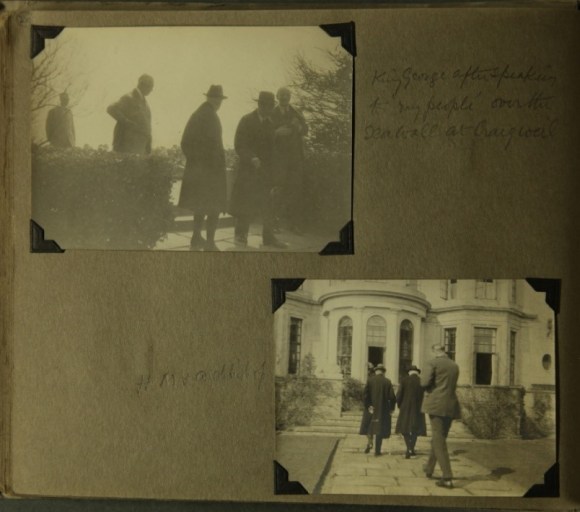With illness, isolation and hopefully recovery very much on our minds at this difficult time, here is a story of an Archbishop of Canterbury suffering a serious illness early in his term of office, at the same time as the King was suffering similarly.
Cosmo Gordon Lang was enthroned as Archbishop of Canterbury on 4th December 1928 at the age of 64. King George V had fallen seriously ill with septicaemia in November, and Lang’s enthronement coincided with a crisis in the monarch’s condition. Lang is believed to have spent the morning of the enthronement day awaiting news of the King, receiving reassurance that he was recovering as he himself was about to set off for Canterbury Cathedral, and which he later announced to the congregation.
Although Lang’s health had generally been good up to this point in his life, his early years at Lambeth were beset by periods of illness, the first of which came later that December. On Sunday 23rd he felt a sharp pain during a dinner with some ordinands whilst he was reading out sections of the Pilgrims Progress. Lang struggled to his room whilst medical assistance was called for, with the eminent surgeon Sir Henry Rigby arriving around 1am having travelled by car from the King’s bedside. He and the King’s physician, Lord Dawson of Penn, decided against operating, even though they had the equipment available to do so. This decision may well have saved Lang’s life, as the operation would have created great pressure on Lang’s heart.
The pain had probably been caused by a blood clot, and Lang was ordered to spend four months recuperating. Initially this time was spent at Lambeth Palace, where Lang fretted over not being able to begin his period as Archbishop of Canterbury properly, and tried from his bed to intervene in as much work as possible. In early 1929 he required a period of convalescence, and this is the subject of an album of photographs held by the Library (MS 5049) taken by Lang’s private chaplain Lumley Green-Wilkinson, who had also been Lang’s chaplain during his time as Bishop of Stepney. Green-Wilkinson was not normally resident at Lambeth Palace, and was responsible for Lang’s accounts and financial affairs amongst other tasks.
The album provides a revealing insight into the privileged circumstances of Lang’s recovery. He spent time at The Moorings, a house at Aldwick in Sussex, which had been lent by the Cowdray family, and is pictured here:


Lang had been hesitant about accepting the offer to stay there, as coincidentally King George V was occupying Craigweil House nearby. Aldwick was part of the town of Bognor, and it was this stay by the King which led to the town being renamed Bognor Regis (and the probably apocryphal suggestion that his last words on his death in 1935 were “Bugger Bognor”). But the Queen’s approval had been received and the King and the Archbishop began to see each other frequently, which Green-Wilkinson captured briefly on camera:

Lang had other noted visitors such as the Prime Minister, Stanley Baldwin and pictured here on the right, William Temple, the new Archbishop of York (the role which Lang had vacated to go to Canterbury):

Lang described The Moorings, which he was to visit regularly in the years to come, as “a charming little house, beautifully furnished, at the end of a quiet avenue and on the very beach, with its long stretches of sand.” He certainly looks to have made himself comfortable in this photograph, although one senses the urge to return to carrying out his new role properly was strong:

Lang was to spend the last part of this period of convalescence in the Mediterranean on board the yacht Corsair, owned by the American financier and philanthropist J. Pierpont Morgan. He joined the ship at Venice on 2nd April 1929, and the cruise took in the Dalmatian coast and Greece.

